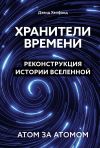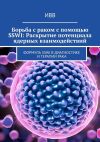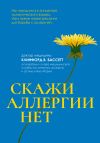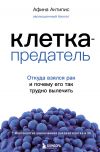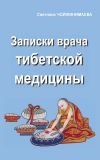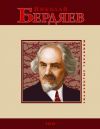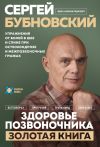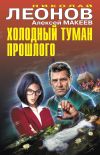Текст книги "Первая клетка. И чего стоит борьба с раком до последнего"
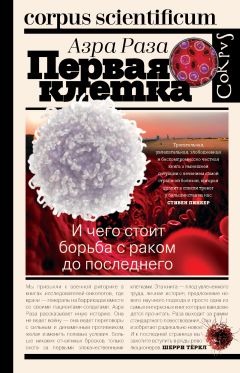
Автор книги: Азра Раза
Жанр: Прочая образовательная литература, Наука и Образование
Возрастные ограничения: +12
сообщить о неприемлемом содержимом
Текущая страница: 23 (всего у книги 24 страниц)
DeVita V. T., Jr., Chu E. A History of Cancer Chemotherapy. Cancer Research. 68 (2008): 8643–8653.
Sharpless N. E., Depinho R. A. The Mighty Mouse: Genetically Engineered Mouse Models in Cancer Drug Development. Nature Reviews Drug Discovery. 5 (2006): 741–754.
Ben-David U. et al. Patient-Derived Xenografts Undergo Mouse-Specific Tumor Evolution. Nature Genetics. 49, no. 11 (2017): 1567–1575.
Izumchenko E. et al. Patient-Derived Xenografts Effectively Capture Responses to Oncology Therapy in a Heterogeneous Cohort of Patients with Solid Tumors. Annals of Oncology. 28, no. 10 (2017): 2595–2605.
Tentler J. J. et al. Patient-Derived Tumour Xenografts as Models for Oncology Drug Development. Nature Reviews Clinical Oncology. 9, no. 6 (2012): 338–350.
Willyard C. The Mice with Human Tumours: Growing Pains for a Popular Cancer Model. Nature. 560, no. 7717 (2018): 156–157.
Van der Worp H. B. et al. Can Animal Models of Disease Reliably Inform Human Studies? PLOS Medicine. 7, no. 3 (2010): e1000245.
Francia G., Kerbel R. S. Raising the Bar for Cancer Therapy Models. Nature Biotechnology. 28 (2010): 561–562.
Ledford H. Cancer-Genome Study Challenges Mouse ‘Avatars.’ Grafting Human Cancer Cells into Mice Alters Tumour Evolution. Nature, October 9, 2017. doi:10.1038/nature.2017.22782.
NCI Awards Champions Oncology $ 2M SBIR Grant for Prostate Cancer Research. Genome Web. www.genomeweb.com/business-policy-funding/nci-awards-champions-oncology-2m-sbir-grant-prostate-cancer-research#.YbCuO9BBzIV
Cancer Drug Benefits Are Overhyped. Dying for a Cure, June 5, 2016.
http://dyingforacure.org/blogs/cancer-drug-benefits-overhyped/
Rubin E. H., Gilliland D. G. Drug Development and Clinical Trials – The Path to an Approved Cancer Drug. Nature Reviews Clinical Oncology. 9 (2012): 215–222.
Pharmaceutical Companies Acknowledge the Failure of Animal Models in Their Drug Development Process, and Write About This Openly in the Scientific Literature. For Life on Earth. www.forlifeonearth.org/wp-content/uploads/2013/05/Pharmaceutical-Company-Quotes2.pdf
Pippin J. J. The Failing Animal Research Paradigm for Human Disease. Independent Science News, May 20, 2014.
O’Rourke M. Doctors Tell Al l – And It’s Bad. Atlantic, November 2014.
Gawande A. Being Mortal. New York: Metropolitan Books, 2014.
[Гаванде А. Все мы смертны. М.: АСТ, 2018.]
Cochran J. The Doctor Crisis. New York: PublicAffairs, 2014.
Jauhar S. Doctored: The Disillusionment of an American Physician. New York: Farrar, Straus and Giroux, 2015.
Глава 2. Пер
Buchanan M. Ubiquity: The Science of History… or Why the World Is Simpler Than We Think. New York: Crown, 2001.
Bak P. How Nature Works. Oxford, UK: Oxford University Press, 1996.
Weinberg R. One Renegade Cell: The Quest for the Origins of Cancer. New York: Basic Books, 1998.
Mehta S. Fire in the Belly: A Batch of Chili Proves Life-Affirming in More Ways Than One. Saveur, September 27, 2010. www.saveur.com/article/Kitchen/Fire-in-the-Belly
Gibbs W. W. Untangling the Roots of Cancer. Scientific American, July 1, 2008. www.scientificamerican.com/article/untangling-the-roots-of-cancer-2008–07
Weinberg R. How Cancer Arises. Scientific American, September 1996. www.scientificamerican.com/article/how-cancer-arises
Mukherjee S. The Emperor of All Maladies: A Biography of Cancer. New York: Scribner, 2010. [Мукерджи С. Царь всех болезней. Биография рака. М.: АСТ, 2013.]
Danaei G. et al. Comparative Risk Assessment Collaborating Group (Cancers). Causes of Cancer in the World: Comparative Risk Assessment of Nine Behavioural and Environmental Risk Factors. Lancet. 366, no. 9499 (2005): 1784–1793.
Mukherjee S. The Gene: An Intimate History. New York: Scribner, 2016.
Zur Hausen H. Condylomata Acuminata and Human Genital Cancer. Cancer Research. 36 (1976): 794.
Poiesz B. J. et al. Detection and Isolation of Type C Retrovirus Particles from Fresh and Cultured Lymphocytes of a Patient with Cutaneous T-Cell Lymphoma. PNAS. 77, no. 12 (1980): 7415–7419.
Gallo R. C. History of the Discoveries of the First Human Retroviruses: HTLV-1 and HTLV-2. Oncogene. 24 (2005): 5926–5930.
Moore P. S., Chang Y. Why Do Viruses Cause Cancer? Highlights of the First Century of Human Tumour Virology. Nature Reviews Cancer. 10 (2010): 878–889.
Sansregret L., Swanton Ch. The Role of Aneuploidy in Cancer Evolution. Cold Spring Harbor Perspectives in Medicine. October 21, 2016. doi:10.1101/cshperspect.a028373.
Rous P. A Sarcoma of the Fowl Transmissible by an Agent Separable from the Tumor Cells. Journal of Experimental Medicine. 13, no. 4 (1911): 397–399.
Rous P. The Challenge to Man of the Neoplastic Cell. Nobel lecture, December 13, 1966. www.nobelprize.org/prizes/medicine/1966/rous/lecture
Kumar P., Murphy F. A. Francis Peyton Rous. Emerging Infectious Diseases. 19, no. 4 (2013): 660–663.
Rubin H. The Early History of Tumor Virology: Rous, RIF, and RAV. PNAS. 108 (2011): 14389–14396.
Weiss R. A., Vogt P. K. 100 Years of Rous Sarcoma Virus. Journal of Experimental Medicine. 208 (2011): 2351–2355.
Burkitt D. A Sarcoma Involving the Jaws in African Children. British Journal of Surgery. 46, no. 197 (1958): 218–223.
Smith E. 50 Years of Epstein-Barr Virus. Cancer Research UK. https://scienceblog.cancerresearchuk.org/2014/03/26/50-years-of-epstein-barr-virus/
Javier R. T., Butel J. S. The History of Tumor Virology. Cancer Research. 68, no. 19 (2008): 7693–7706.
Bister K. Discovery of Oncogenes: The Advent of Molecular Cancer Research. PNAS. 112, no. 50 (2015): 15259–15260.
Lane D., Levine A. P53 Research: The Past 30 Years and the Next 30 Years. Cold Spring Harbor Perspectives in Biology. 2, no. 12 (2010): a000893.
Donehower L. A. Using Mice to Examine p53 Functions in Cancer, Aging, and Longevity. Cold Spring Harbor Perspectives in Biology. 1, no. 6 (2009): a001081.
Lane D. P. et al. P53-Based Cancer Therapy. Cold Spring Harbor Perspectives in Biology. 2, no. 9 (2010): a001222.
Bieging K. T. et al. Unravelling Mechanisms of p53-Mediated Tumour Suppression. Nature Reviews Cancer. 14 (2014): 359–370.
Li F. P., Fraumeni J. F. Soft-Tissue Sarcomas, Breast Cancer, and Other Neoplasms: A Familial Syndrome? Annals of Internal Medicine. 71, no. 4 (1969): 747–752.
Hisada M. et al. Multiple Primary Cancers in Families with Li-Fraumeni Syndrome. Journal of the National Cancer Institute. 90, no. 8 (1998): 606–611.
Birch J. M. et al. Prevalence and Diversity of Constitutional Mutations in the p53 Gene Among 21 Li-Fraumeni Families. Cancer Research. 54, no. 5 (1994): 1298–1304.
Greicius J. And Yet, You Try: A Father’s Quest to Save His Son. Stanford Medicine: Diagnostics, Fall 2016. https://stanmed.stanford.edu/2016fall/milan-gambhirs-li-fraumeni-syndrome.html
Haase D. TP53 Mutation Status Divides Myelodysplastic Syndromes with Complex Karyotypes into Distinct Prognostic Subgroups. Nature, January 2019. doi:10.1038/s41375-018-0351-2.
Martinez-Hoyer S. et al. Mechanisms of Resistance to Lenalidomide in Del(5q) Myelodysplastic Syndrome Patients. Blood. 126 (2015): 5228.
Abegglen L. M. et al. Potential Mechanisms for Cancer Resistance in Elephants and Comparative Cellular Response to DNA Damage in Humans. JAMA. 314, no. 17 (2015): 1850–1860.
Caulin A. F., Maley C. C. Peto’s Paradox: Evolution’s Prescription for Cancer Prevention. Trends in Ecology & Evolution. 26, no. 4 (2011): 175–182.
Tollis M. et al. Paradox: How Has Evolution Solved the Problem of Cancer Prevention? BMC Biology. 15, no. 60 (2017).
Callaway E. How Elephants Avoid Cancer: Pachyderms Have Extra Copies of a Key Tumour-Fighting Gene. Nature, October 8, 2015. doi:10.1038/nature.2015.18534.
Armstrong S. P53: The Gene That Cracked the Cancer Code. New York: Bloomsbury Sigma, 2016.
GarcÍa-Cao I. “Super p53” Mice Exhibit Enhanced DNA Damage Response, Are Tumor Resistant and Age Normally. EMBO Journal. 21, no. 22 (2002): 6225–6235.
Hogenboom M. The Animal That Don’t Get Cancer. BBC, October 31, 2015. www.bbc.com/earth/story/20151031-the-animal-that-doesnt-get-cancer
Tomasetti C. et al. Stem Cell Divisions, Somatic Mutations, Cancer Etiology, and Cancer Prevention. Science. 355, no. 331 (2017): 1330–1334.
Vogelstein B. et al. Cancer Genome Landscapes. Science. 339, no. 6127 (2013): 1546–1558.
New Study Finds That Most Cancer Mutations Are Due to Random DNA Copying ‘Mistakes’. Johns Hopkins Medicine, March 23, 2017. www.hopkinsmedicine.org/news/media/releases/new_study_finds_that_most_cancer_mutations_are_due_to_random_dna_copying_mistakes
Yachida S. et al. Distant Metastasis Occurs Late During the Genetic Evolution of Pancreatic Cancer. Nature. 467 (2010): 1114–1117.
Pienta K. et al. The Cancer Diaspora: Metastasis Beyond the Seed and Soil Hypothesis. Clinical Cancer Research. 19, no. 21 (2013). doi:10.1158/1078–0432. CCR-13–2158.
McGranahan N., Swanton Ch. Clonal Heterogeneity and Tumor Evolution: Past, Present, and the Future. Cell. 168 (2017): 631.
Giam M., Rancati G. Aneuploidy and Chromosomal Instability in Cancer: A Jackpot to Chaos. Cell Division. 10 (2015): 3.
How Well Do We Understand the Relation Between Incorrect Chromosome Number and Cancer? EurekAlert! www.eurekalert.org/pub_releases/2017–01/cshl-hwd011117.php
Sheltzer J. M. et al. Single-Chromosome Gains Commonly Function as Tumor Suppressors. Cancer Cell. 31, no. 2 (2017): 240–255.
Ansari D. Pancreatic Cancer and Thromboembolic Disease, 150 Years After Trousseau. Hepatobiliary Surgery and Nutrition. 4, no. 5 (2015): 325–335.
Campisi J. Aging, Cellular Senescence, and Cancer. Annual Review of Physiology. 75 (2013): 685–705.
Lee S., Lee J-S. Cellular Senescence: A Promising Strategy for Cancer Therapy. BMB Reports. 52, no. 1 (2019): 35–41.
Lan W., Miao Y. Autophagy and Senescence. Senescence Signalling and Control in Plants. (2019): 239–253.
Franceschi C., Campisi J. Chronic Inflammation (Inflammaging) and Its Potential Contribution to Age-Associated Diseases. Journals of Gerontology: Series A. 69, supplement 1 (2014): S4–S9.
Harley C. B., Villeponteau B. Telomeres and Telomerase in Aging and Cancer. Current Opinion in Genetics & Development. 5, no. 2 (1995): 249–255.
Blackburn E., Epel E. The Telomere Effect: A Revolutionary Approach to Living Younger, Healthier, Longer. New York: Grand Central Publishing, 2017.
Steensma D. et al. Clonal Hematopoiesis of Indeterminate Potential and Its Distinction from Myelodysplastic Syndromes. Blood. 126 (2015): 9–16.
Jaiswal S. et al. Age-Related Clonal Hematopoiesis Associated with Adverse Outcomes. New England Journal of Medicine. 371 (2014): 2488–2498.
Bertamini L. et al. Clonal Hematopoiesis of Indeterminate Potential (CHIP) in Patients with Coronary Artery Disease and in Centenarians: Further Clues Linking CHIP with Cardiovascular Risk. Blood. 130 (2017): 1144.
Thomas H. Mutation and Clonal Selection in the Ageing Oesophagus. Nature Reviews Gastroenterology & Hepatology. 16 (2019): 139.
Martincorena I. et al. Somatic Mutant Clones Colonize the Human Esophagus with Age. Science. 362 (2018): 911–917.
Yokoyama A. et al. Age-Related Remodelling of Oesophageal Epithelia by Mutated Cancer Drivers. Nature. 565 (2019): 312–317.
Malcovati L. et al. Clinical Significance of Somatic Mutation in Unexplained Blood Cytopenia. Blood. 129 (2017): 3371–3378.
Fialkow P. J. et al. Evidence for a Multistep Pathogenesis of Chronic Myelogenous Leukemia. Blood. 58 (1981): 158–163.
Gilliland G. D. Nonrandom X–Inactivation Patterns in Normal Females: Lyonization Ratios Vary with Age. Blood. 88, no. 1 (1996): 59–65.
Raza A. Consilence Across Evolving Dysplasias Affecting Myeloid, Cervical, Esophageal, Gastric and Liver Cells: Common Themes and Emerging Patterns. Leukemia Research. 24, no. 1 (2000): 63–72.
Глава 3. Леди Н
Montoro J. et al. Improving Treatment for Myelodysplastic Syndromes Patients. Current Treatment Options in Oncology. 19 (2018): 66.
Fuchs Ota, ed. Recent Developments in Myelodysplastic Syndromes. London: IntechOpen, 2019.
Platzbecker U. Treatment of MDS. Blood. 133, no. 10 (2019): 1096–1107.
Ferrara F., Vitagliano O. Induction Therapy in Acute Myeloid Leukemia: Is It Time to Put Aside Standard 3 + 7? Hematological Oncology. (2019). doi:10.1002/hon.2615.
Cerrano M., Itzykson R. New Treatment Options for Acute Myeloid Leukemia in 2019. Current Oncology Reports. 21, no. 2 (2019): 16.
Buccisano F. The Emerging Role of Measurable Residual Disease Detection in AML in Morphologic Remission. Seminars in Hematology. 56, no. 2 (2019): 125–130.
Almeida A. et al. Recent Advances in the Treatment of Lower-Risk Non-Del(5q) Myelodysplastic Syndromes (MDS). Leukemia Research. 52 (2017): 50–57.
Luspatercept – Acceleron Pharma/Celgene Corporation. Adis Insight.
https://adisinsight.springer.com/drugs/800029519
Fenaux P. Luspatercept for the Treatment of Anemia in Myelodysplastic Syndromes and Primary Myelofibrosis. Blood. 133, no. 8 (2019): 790–794.
Prasad V. Do Cancer Drugs Improve Survival or Quality of Life? BMJ. 359 (2017): j4528.
Prasad V. et al. The High Price of Anticancer Drugs: Origins, Implications, Barriers, Solutions. Nature Reviews Clinical Oncology. 14 (2017): 381–390.
Keshavan M. Did He Really Just Tweet That? Dr. Vinay Prasad Takes on Big Pharma, Big Medicine, and His Own Colleagues – With Glee. Stat, September 15, 2017.
Exceptional Responders: Why Do Some Cancer Drugs Work for Them and Not Others? Cancer Treatment Centers of America, March 8, 2018. www.cancercenter.com/community/blog/2018/03/why-do-some-cancer-drugs-work-for-them-and-not-others
Milowsky M. I. et al. Phase II Study of Everolimus in Metastatic Urothelial Cancer. BJU International. 112, no. 4 (2013): 462–470.
NCI Sponsored Trials in Precision Medicine. Division of Cancer Treatment and Diagnosis. https://dctd.cancer.gov/majorinitiatives/NCI-sponsored_trials_in_precision_medicine.htm
West H. Novel Precision Medicine Trial Designs Umbrellas and Baskets. JAMA Oncology. 3, no. 3 (2017): 423.
Marquart J. et al. Estimation of the Percentage of US Patients with Cancer Who Benefit from Genome-Driven Oncology. JAMA Oncology. 4, no. 8 (2018): 1093–1098.
Prasad V. Perspective: The Precision-Oncology Illusion. Nature. 537 (2016): S63.
Kaiser J. A Cancer Drug Tailored to Your Tumor? Experts Trade Barbs over “Precision Oncology”. Science, April 24, 2018. doi:10.1126/science.aat9794.
Harris L. et al. Update on the NCI—Molecular Analysis for Therapy Choice (NCI—MATCH/EAY131) Precision Medicine Trial. Pharmacogenetics, Pharmacogenomics, and Therapeutic Response. 17, supplement 1 (2018). doi:10.1158/1535–7163. TARG-17-B080.
Davis C. et al. Availability of Evidence of Benefits on Overall Survival and Quality of Life of Cancer Drugs Approved by European Medicines Agency: Retrospective Cohort Study of Drug Approvals, 2009–13. BMJ. 359 (2017). doi:10.1136/bmj.j4530.
Drilon A. et al. Efficacy of Larotrectinib in TRK Fusion – Positive Cancers in Adults and Children. New England Journal of Medicine. 378 (2018): 731–739.
Broderick J. M. FDA Approves Larotrectinib for NTRK + Cancers. OncLive, November 26, 2018. www.onclive.com/view/fda-approves-larotrectinib-for-ntrk-cancers
Darwin Ch. On the Origin of Species. Digireads.com. [Дарвин Ч. Происхождение видов путем естественного отбора, или Сохранение благоприятных рас в борьбе за жизнь. СПб.: Наука, 1991.]
Nowell P. C. The Clonal Evolution of Tumor Cell Populations. Science. 194, no. 4260 (1976): 23–28.
Greaves M., Maley C. C. Clonal Evolution in Cancer. Nature. 481 (2012): 306–313.
Janiszewska M. et al. Clonal Evolution in Cancer: A Tale of Twisted Twines. Cell Stem Cell. 16 (2015). doi:10.1016/j.stem.2014.12.011.
McGranahan N., Swanton Ch. Clonal Heterogeneity and Tumor Evolution: Past, Present, and the Future. Cell. 168, no. 4 (2017): 613–628.
Fidler I. J. The Pathogenesis of Cancer Metastasis: The ‘Seed and Soil’ Hypothesis Revisited. Nature Reviews Cancer. 3 (2003): 453–458.
Ribatti D. et al. Stephen Paget and the ‘Seed and Soil’ Theory of Metastatic Dissemination. Clinical and Experimental Medicine. 6, no. 4 (2006): 145–149.
Fidler I. J. et al. The ‘Seed and Soil’ Hypothesis Revisited. Lancet Oncology. 9, no. 8 (2008): 808.
Pienta K. et al. The Cancer Diaspora: Metastasis Beyond the Seed and Soil Hypothesis. Clinical Cancer Research. 19, no. 21 (2013). doi:10.1158/1078–0432. CCR-13–2158.
Tiong Ing S. et al. New Drugs Creating New Challenges in Acute Myeloid Leukemia. Genes, Chromosomes & Cancer. (2019). doi:10.1002/gcc.22750.
Kubal T. E. et al. Safety and Feasibility of Outpatient Induction Chemotherapy with CPX-351 in Selected Older Adult Patients with Newly Diagnosed AML. Journal of Clinical Oncology. 36, supplement 15 (2018): e19013.
Levis M. Midostaurin Approved for FLT3-Mutated AML. Blood. 129 (2017): 3403–3406.
Глава 4. Китти С
Profiles in Science. The Mary Lasker papers. US National Library of Medicine.
Wallace L. G. Catalyst for the National Cancer Act: Mary Lasker. Albert and Mary Lasker Foundation. December 15, 2016. https://laskerfoundation.org/catalyst-for-the-national-cancer-act-mary-lasker/
National Cancer Act of 1971. National Cancer Institute. https://dtp.cancer.gov/timeline/noflash/milestones/M4_Nixon.htm
Holford T. R. Tobacco Control and the Reduction in Smoking-Related Premature Deaths in the United States, 1964–2012. JAMA. 311, no. 2 (2014): 164–171.
Kolata G. Advances Elusive in the Drive to Cure Cancer. New York Times, April 23, 2009.
Leaf C. The Truth in Small Doses: Why We’re Losing the War on Cancer – And How to Win. New York: Simon & Schuster, 2013.
Baker M. 1,500 Scientists Lift the Lid on Reproducibility: Survey Sheds Light on the ‘Crisis’ Rocking Research. Nature. 533 (2016): 452–454.
DeVita V. T., Jr., Chu E. A History of Cancer Chemotherapy. Cancer Research. 68, no. 21 (2008). doi:10.1158/0008–5472.CAN-07–6611.
Gilligan A. M. Death or Debt? National Estimates of Financial Toxicity in Persons with Newly-Diagnosed Cancer. American Journal of Medicine. 131, no. 10 (2018): 1187–1199.
Fojo T. et al. Unintended Consequences of Expensive Cancer Therapeutics – The Pursuit of Marginal Indications and a Me-Too Mentality That Stifles Innovation and Creativity: The John Conley Lecture. JAMA Otolaryngology – Head & Neck Surgery. 140, no. 12 (2014): 1225–1236.
Marchetti S., Schellens J. H. M. The Impact of FDA and EMEA Guidelines on Drug Development in Relation to Phase 0 Trials. British Journal of Cancer. 97 (2007): 577–581.
Kummar Sh. Compressing Drug Development Timelines in Oncology Using Phase ‘0’ Trials. Nature Reviews Cancer. 7 (2007): 131–139.
Murgo J. A. et al. Designing Phase 0 Cancer Clinical Trials. Clinical Cancer Research. 14, no. 12 (2008).
Spector R. The War on Cancer: A Progress Report for Skeptics. Skeptical Inquirer, January/February 2010.
Hitchens Ch. Topic of Cancer. Vanity Fair, August 2010.
Adams C. P., Brantner V. V. Estimating the Cost of New Drug Development: Is It Really 802 Million Dollars? Health Affairs (Millwood). 25, no. 2 (2006): 420–428.
Глава 5. Джей-Си
Donor Registry Data. US Department of Health and Human Services. https://bloodcell.transplant.hrsa.gov/research/registry_donor_data/index.html
Koutsavlis I. Transfusion Thresholds, Quality of Life, and Current Approaches in Myelodysplastic Syndromes. Anemia, 2016. doi:10.1155/2016/8494738.
Black Bone Marrow.com. http://blackbonemarrow.com/
Poynter J. N. et al. Chemical Exposures and Risk of Acute Myeloid Leukemia and Myelodysplastic Syndromes in a Population-Based Study. International Journal of Cancer. 140, no. 1 (2017): 23–33.
Murphy T., Yee K. W. L. Cytarabine and Daunorubicin for the Treatment of Acute Myeloid Leukemia. Expert Opinion on Pharmacotherapy. 18, no. 16 (2017): 1765–1780.
Steele J. The Man Who Would Tame Cancer: Patrick Soon-Shiong Is Opening a New Front in the War on the Deadly Disease. Nautilus, January 28, 2016.
Raza A. et al. Apoptosis in Bone Marrow Biopsy Samples Involving Stromal and Hematopoietic Cells in 50 Patients with Myelodysplastic Syndromes. Blood. 86, no. 1 (1995): 268–276.
Raza A. et al. Novel Insights into the Biology of Myelodysplastic Syndromes: Excessive Apoptosis and the Role of Cytokines. International Journal of Hematology. 63, no. 4 (1996): 265–278.
Raza A. et al. Thalidomide Produces Transfusion Independence in Long Standing Refractory Anemias of Patients with Myelodysplastic Syndromes. Blood. 98, no. 4 (2001): 958–965.
Raza A., Galili N. The Genetic Basis of Phenotypic Heterogeneity in Myelodysplastic Syndromes. Nature Reviews Cancer. 12, no. 12 (2012): 849–859.
Глава 6. Андрей
Wen P. Y., Kesari S. Malignant Gliomas in Adults. New England Journal of Medicine. 359 (2008): 492–507.
Stewart L. A. Chemotherapy in Adult High-Grade Glioma: A Systematic Review and Meta-Analysis of Individual Patient Data from 12 Randomised Trials. Lancet. 359 (2002): 1011–1018.
KÜbler-Ross E. On Death and Dying. New York: Scribner, 1997.
[Кюблер-Росс Э. О смерти и умирании. СПб: Корвет, 2016.]
Izard J., Siemens D. R. What’s in Your Toolkit? Guiding Our Patients Through Their Shared Decision-Making. Canadian Urological Association Journal. 12, no. 10 (2018): 294–295.
Hagedoorn M. et al. Coping with Cancer: The Perspective of Patients’ Relatives. Acta Oncologica. 50, no. 2 (2011): 205–211.
Wohlfarth P. et al. Chimeric Antigen Receptor T-Cell Therapy – A Hematological Success Story. Memo. 11, no. 2 (2018): 116–121.
Titov A. et al. The Biological Basis and Clinical Symptoms of CAR-T Therapy-Associated Toxicities. Cell Death & Disease. 9 (2018): article 897.
Fried Sh. et al. Early and Late Hematologic Toxicity Following CD19 CAR-T Cells. Bone Marrow Transplantation, 2019. doi:10.1038/s41409-019-0487-3.
Brudno J. N., Kochenderfer J. N. Chimeric Antigen Receptor T-Cell Therapies for Lymphoma. Nature Reviews Clinical Oncology. 15 (2018): 31–46.
Mahadeo K. M. Management Guidelines for Paediatric Patients Receiving Chimeric Antigen Receptor T Cell Therapy. Nature Reviews Clinical Oncology. 16 (2019): 45–63.
Hoos A. Development of Immuno-Oncology Drugs – From CTLA4 to PD1 to the Next Generations. Nature Reviews Drug Discovery. 15, no. 4 (2016): 235–247.
Coulie P. G. et al. Tumour Antigens Recognized by T Lymphocytes: At the Core of Cancer Immunotherapy. Nature Reviews Cancer. 14, no. 2 (2014): 135–146.
Schmidt Ch. The Struggle to Do No Harm in Clinical Trials: What Lessons Are Being Learnt from Studies That Went Wrong? Nature, December 20, 2017. doi:10.1038/d41586-017-08705-4.
Maude S. L. et al. Tisagenlecleucel in Children and Young Adults with B-Cell Lymphoblastic Leukemia. New England Journal of Medicine. 378, no. 5 (2018): 439–448.
Editorial. CAR T-Cell Therapy: Perceived Need Versus Actual Evidence. Lancet Oncology. 19, no. 10 (2018): 1259.
Osorio J. Cancer Immunotherapy Research Round-Up: Highlights from Clinical Trials. Nature, December 20, 2017.
Barreyro L. et al. Chronic Immune Response Dysregulation in MDS Pathogenesis. Blood. 132, no. 15 (2018): 1553–1560.
Almasbak H. et al. CAR T Cell Therapy: A Game Changer in Cancer Treatment. Journal of Immunology Research, 2016. doi:10.1155/2016/5474602.
Sun Sh. et al. Immunotherapy with CAR-Modified T Cells: Toxicities and Overcoming Strategies. Journal of Immunology Research, 2018. doi:10.1155/2018/2386187.
Doudna J. A., Sternberg S. H. A Crack in Creation: Gene Editing and the Unthinkable Power to Control Evolution. Boston: Houghton Mifflin Harcourt, 2017. [Даудна Дж., Стернберг С. Трещина в мироздании. М.: Corpus, 2019.]
Haapaniemi E. et al. CRISPR – Cas9 Genome Editing Induces a p53-Mediated DNA Damage Response. Nature Medicine, 2018. doi:10.1038/s41591-018-0049-z.
Shin H. Y. et al. CRISPR/Cas9 Targeting Events Cause Complex Deletions and Insertions at 17 Sites in the Mouse Genome. Nature Communications. 8 (2017): article 15464.
Kosicki M. et al. Repair of Double-Strand Breaks Induced by CRISPR – Cas9 Leads to Large Deletions and Complex Rearrangements. Nature Biotechnology. 36 (2018): 765–771.
Глава 7. Харви
Weir H. K. et al. The Past, Present, and Future of Cancer Incidence in the United States: 1975 Through 2020. Cancer. 121, no. 11 (2015): 1827–1837.
By the Numbers: NCI Budget Breakdown, FY 2018. doi:10.1158/2159–8290.CD-NB2019–002.
Aparicio S., Caldas C. The Implications of Clonal Genome Evolution for Cancer Medicine. New England Journal of Medicine. 368 (2013): 842–851.
Walter M. J. et al. Clonal Architecture of Secondary Acute Myeloid Leukemia. New England Journal of Medicine. 366 (2012): 1090–1098.
Ruiz C. et al. Advancing a Clinically Relevant Perspective of the Clonal Nature of Cancer. PNAS. 108 (2011): 12054–12059.
Cohen J. ‘It’s Sobering’: A Once-Exciting HIV Cure Strategy Fails Its Test in People. Science, July 25, 2018. doi:10.1126/science.aau8963.
Crowley E. et al. Liquid Biopsy: Monitoring Cancer-Genetics in the Blood. Nature Reviews Clinical Oncology. 10 (2013): 472–484.
Bleyer A., Welch H. G. Effect of Three Decades of Screening Mammography on Breast-Cancer Incidence. New England Journal of Medicine. 367, no. 21 (2012): 1998–2005.
Miller A. B. et al. Twenty Five Year Follow-Up for Breast Cancer Incidence and Mortality of the Canadian National Breast Screening Study: Randomised Screening Trial. British Medical Journal. 348 (2014): 366.
Fagin D. Toms River: A Story of Science and Salvation. Washington, DC: Island Press, 2014.
Ilic D. et al. Prostate Cancer Screening with Prostate-Specific Antigen (PSA) Test: A Systematic Review and Meta-Analysis. BMJ. 362 (2018): k3519.
Loud J., Murphy J. Cancer Screening and Early Detection in the 21st Century. Seminars in Oncology Nursing. 33, no. 2 (2017): 121–128.
Adami H.-O. et al. Towards an Understanding of Breast Cancer Etiology. Seminars in Cancer Biology. 8, no. 4 (1998): 255–262.
Esserman L. J. Overdiagnosis and Overtreatment in Cancer: An Opportunity for Improvement. JAMA. 310, no. 8 (2013): 797.
Autier P., Boniol M. Effect of Screening Mammography on Breast Cancer Incidence. New England Journal of Medicine. 368 (2013): 677–679.
Das S., Batra S. K. Understanding the Unique Attributes of MUC16 (CA125): Potential Implications in Targeted Therapy. Cancer Research, 2015. doi:10.1158/0008–5472. CAN-15–1050.
Leaf C. The Truth in Small Doses: Why We’re Losing the War on Cancer – And How to Win. New York: Simon & Schuster, 2013.
Adami H.-O. et al. Time to Abandon Early Detection Cancer Screening. European Journal of Clinical Investigation, December 19, 2018. doi:10.1111/eci.13062.
Kopans D. B. Breast Cancer Screening: Where Have We Been and Where Are We Going? A Personal Perspective Based on History, Data and Experience. Clinical Imaging. 48 (2018): vii—xi.
Malvezzi M. et al. European Cancer Mortality Predictions for the Year 2019 with Focus on Breast Cancer. Annals of Oncology, March 19, 2019. doi:10.1093/annonc/mdz051.
Malvezzi M. et al. European Cancer Mortality Predictions for the Year 2018 with Focus on Colorectal Cancer. Annals of Oncology. 29, no. 4 (2018): 1016–1022.
Prasad V. Why Cancer Screening Has Never Been Shown to ‘Save Lives’ – And What We Can Do About It. BMJ. 352 (2016). doi:10.1136/bmj.h6080.
Narod S. A. et al. Why Have Breast Cancer Mortality Rates Declined? Journal of Cancer Policy. 5 (2015): 8–17.
Colantonio S. et al. A Smart Mirror to Promote a Healthy Lifestyle. Biosystems Engineering. 138 (2015): 33–43.
Iverson N. M. et al. In Vivo Biosensing Via Tissue Localizable Near Infrared Fluorescent Single Walled Carbon Nanotubes. Nature Nanotechnology. 8 (2013): 873–880.
Gambhir S. S. Toward Achieving Precision Health. Science Translational Medicine. 10, no. 430 (2018): 3612.
Wong D. Saliva Liquid Biopsy for Cancer Detection. Paper presented at the American Association for the Advancement of Science 2016 Annual Meeting, Washington, DC, February 11–15, 2016.
Johnson J. Intelligent Toilets, Smart Couches and the House of the Future. Financial Post, June 6, 2012. http://business.financialpost.com/uncategorized/intelligent-toilets-smart-couches-and-the-house-of-the-future
Wang L. Microwave Sensors for Breast Cancer Detection. Sensors. 18, no. 2 (2018): 655.
Hsu J. Can a New Smart Bra Really Detect Cancer? Live Science, October 17, 2012.
Kahn N. et al. Dynamic Nanoparticle-Based Flexible Sensors: Diagnosis of Ovarian Carcinoma from Exhaled Breath. Nano Letters. 15, no. 10 (2015): 7023–7028.
Czernin J., Gambhir S. S. Discussions with Leaders: A Conversation Between Sam Gambhir and Johannes Czernin. Journal of Nuclear Medicine. 59, no. 12 (2018): 1783–1785.
Vermesh O. et al. An Intravascular Magnetic Wire for the High-Throughput Retrieval of Circulating Tumour Cells In Vivo. Nature Biomedical Engineering. 2, no. 9 (2018): 696–705.
Ferrari E. et al. Urinary Proteomics Profiles Are Useful for Detection of Cancer Biomarkers and Changes Induced by Therapeutic Procedures. Molecules. 24, no. 4 (2019): 794.
Colditz G. A. et al. Applying What We Know to Accelerate Cancer Prevention. Science Translational Medicine. 4, no. 127 (2012): 127rv4.
Wan J. C. et al. Liquid Biopsies Come of Age: Towards Implementation of Circulating Tumour DNA. Nature Reviews Cancer. 17 (2017): 223–238.
Bianchi D. W. Circulating Fetal DNA: Its Origin and Diagnostic Potential – A Review. Placenta. 25, supplement (2004): S93–S101.
Jahr S. et al. DNA Fragments in the Blood Plasma of Cancer Patients: Quantitations and Evidence for Their Origin from Apoptotic and Necrotic Cells. Cancer Research. 61 (2001): 1659–1665.
Thierry A. R. et al. Clinical Validation of the Detection of KRAS and BRAF Mutations from Circulating Tumor DNA. Nature Medicine. 20 (2014): 430–435.
Ding L. et al. Expanding the Computational Toolbox for Mining Cancer Genomes. Nature Reviews Genetics. 15, no. 8 (2014): 556–570.
Murtaza M. et al. Non-Invasive Analysis of Acquired Resistance to Cancer Therapy by Sequencing of Plasma DNA. Nature. 497 (2013): 108–112.
Siravegna G. et al. Integrating Liquid Biopsies into the Management of Cancer. Nature Reviews Clinical Oncology. 14 (2017): 531–548.
Taylor D. D., Gercel-Taylor C. MicroRNA Signatures of Tumor-Derived Exosomes as Diagnostic Biomarkers of Ovarian Cancer. Gynecologic Oncology. 110 (2008): 13–21.
Правообладателям!
Это произведение, предположительно, находится в статусе 'public domain'. Если это не так и размещение материала нарушает чьи-либо права, то сообщите нам об этом.
